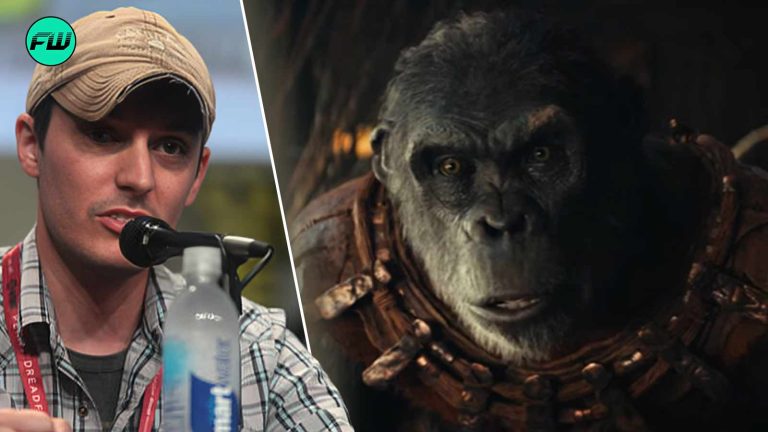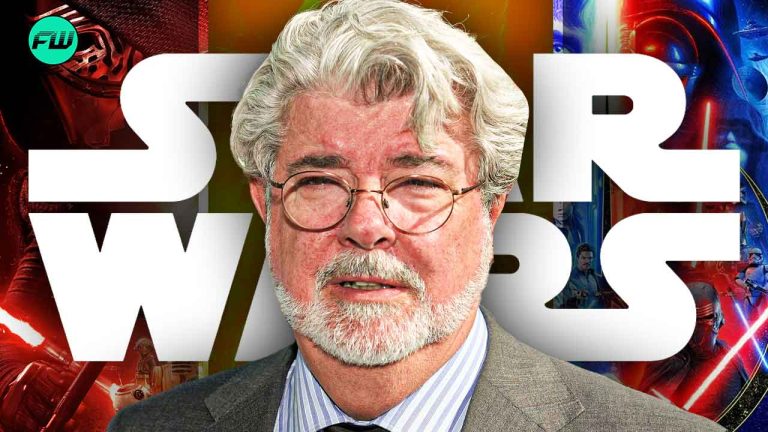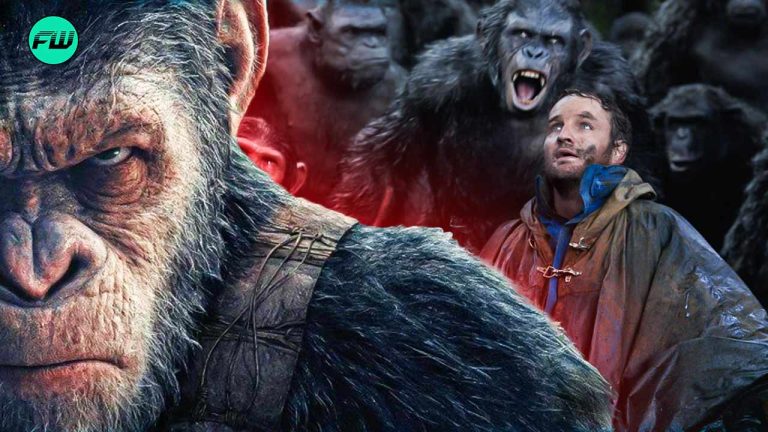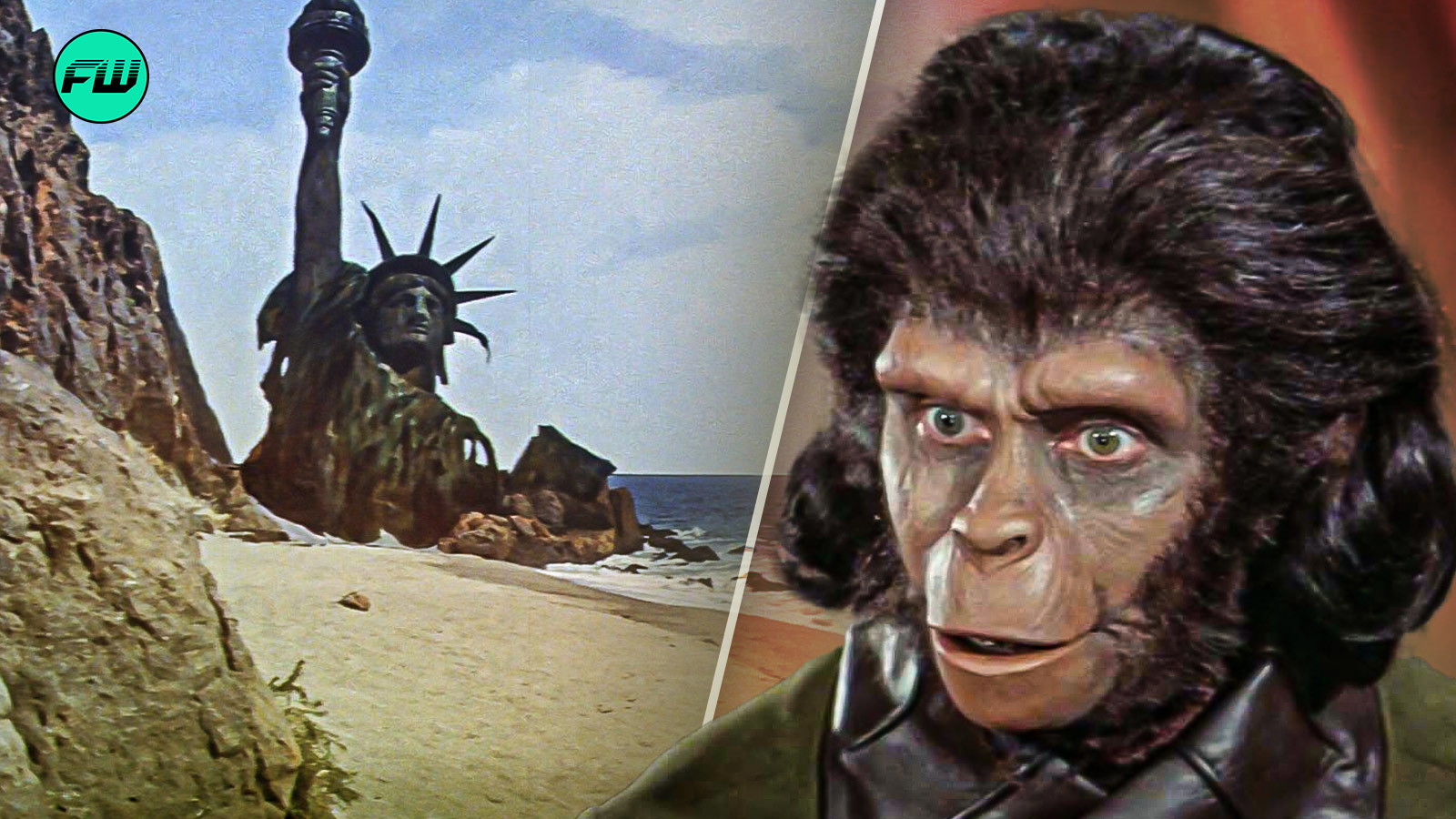
While there have been several iterations of the iconic Planet of the Apes, nothing has the pop cultural significance of the 1968 original. The sci-fi film did not just conform to the tropes of the genre, but also included political commentary, elements of horror, and an insane twist that still hits hard despite being one of the most recognized images in human history.
The iconic half-buried Statue of Liberty is a huge revelation in the movie and one hell of a way to end it. It reveals something that everyone obviously feared but never dared to think of, as it is too tragic and dark a scenario to think of. So, what exactly does the symbol of the Statue of Liberty mean?
What happens in the 1968 version of Planet of the Apes?
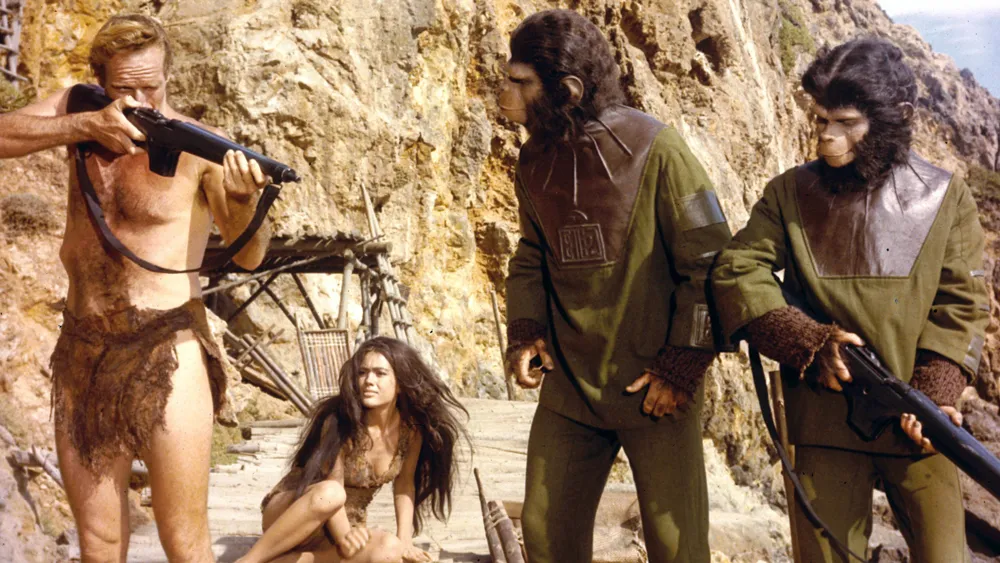
The Planet of the Apes franchise is still running after several sequels, remakes, and reboots. The current iteration of the franchise began with 2011’s Rise of the Planet of the Apes, taking it from its sci-fi horror roots to an action blockbuster with CGI apes taking over the present-day world. Everyone has seen Caesar’s war chant.
However, what fans see today is the result of several decades of ape-related content in the franchise, beginning with Planet of the Apes. Released in 1968, the film was based on the French novel La Planète des singes by Pierre Boulle and launched the Planet of the Apes franchise, which is one of the longest-running sci-fi franchises in movie history.
The film sees a group of astronauts waking up on an unknown planet after crash landing inside a lake, thousands of years after their departure from Earth. The protagonist George Taylor (played by Charlton Heston) is separated from his gang and is captured by a group of gorillas and he is imprisoned.
As he charts his escape, he learns that the planet has been taken over by apes (with a hierarchy system dividing various primates), and humans are at the lowest end of the system. After many plans and events, Taylor escapes imprisonment from his newly made friends, the human Nova and the ape Dr. Zira.
They reach a particular area on the planet where Taylor’s ship had crash-landed and realize remnants of human materials, proving that humans were once thriving in this society. The antagonist Dr. Zaius, admits that he knew about the human artifacts and gives Taylor and Nova the chance to enter the ‘Forbidden Zone’ and escape his clutches.
Dr. Zira, her nephew Lucious, and her fiancé Cornelius are recaptured by Dr. Zaius and are put on trial for heresy. Taylor and Nova enter the ‘Forbidden Zone’ and make their way to the shoreline, only to see a half-submerged Statue of Liberty at the end of the beach.
The ending of Planet of the Apes with the Statue of Liberty explained
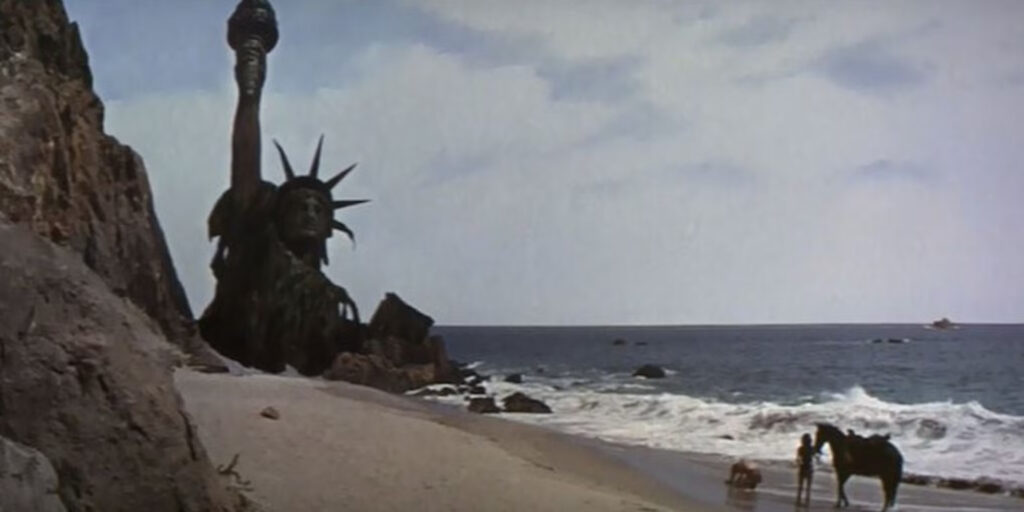
Some movies are defined by the journey they take the audience through, while their destinations define some. Think of some of the most iconic endings of all time, and they almost always have a twist that changes everything about the journey so far. The Sixth Sense, Inception, Psycho, and The Usual Suspects come to mind when considering such game-changing endings.
However, the king of all these endings is possibly the sci-fi horror adventure film Planet of the Apes. The iconic Statue of Liberty, half-submerged in the waters of the beach, and Charlton Heston’s George Taylor slowly realizing what has happened make for a haunting ending that has become a pop cultural icon.
The ending image of the Statue of Liberty has been referenced and parodied numerous times, including in The Simpsons (that’s when you know you’ve made it). It is a legendary twist, indicating that a society ruled over by apes and other primates, with humans being subjugated to torture, is not in an alternative dimension, but on Earth, just a few centuries later.
Unlike other films of the era, Planet of the Apes did not spoon-feed the ending to the audience. The presence of the Statue of Liberty and George Taylor’s dramatic reaction to it, cursing humanity for not saving the world, was all the symbolism needed to send the point home. Humans now have the power to change the future, but they did not, and the Earth was ruled over by apes.
Many have wondered why Dr. Zaius let Taylor and Nova go into the ‘Forbidden Zone’. He wanted to hide the human artefacts from the public (the apes) at the time to maintain their order in society, not letting citizens know that humans were capable of intelligent thought. However, he just allows Taylor and Nova to go.
However, it is pretty simple. Dr.Zaius knows that these are humans from the past, and he knows the real history of the world. He lets them go, knowing that they will be helpless in this situation and would never be able to convince the apes that they once ruled the world. Who would want to go back to being subjugated citizens anyway?
The 1968 Planet of the Apes strayed from the original book ending, but Tim Burton’s remake did not
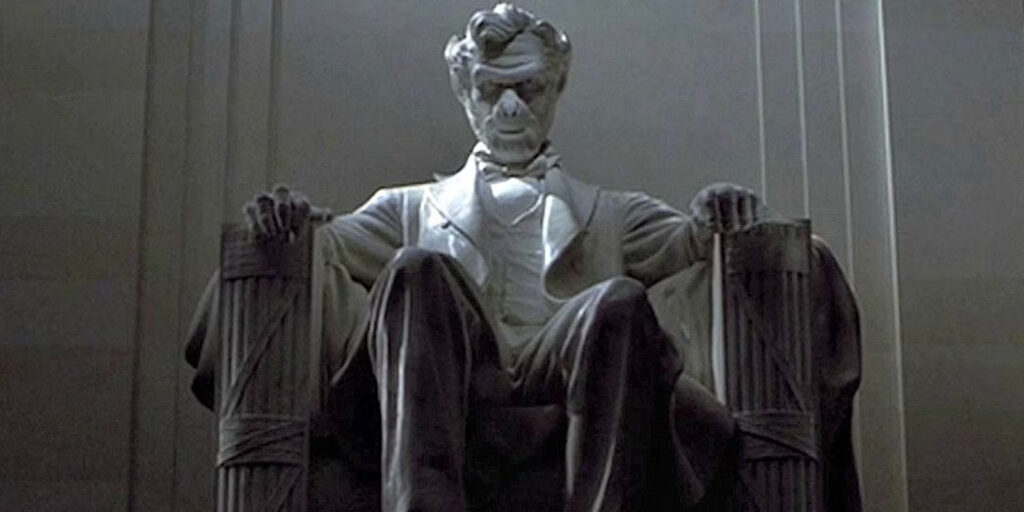
The 1968 Planet of the Apes is a certified classic. The recent Rise of the Planet of the Apes and subsequent sequels are also pretty good, considering what they were trying to do with the genre. Filmmakers like Matt Reeves really took the franchise to a whole new level, as it only went through new lows after that masterpiece of an original.
The inescapable black dot on the franchise is obviously Tim Burton’s 2001 remake of the original film. Starring Mark Wahlberg, Tim Roth, Helena Bonham Carter, and Paul Giamatti, the film was a financial success, earning $362 million against a $100 million budget (via Box Office Mojo), but was received poorly by critics.
One of the most glaringly obvious missteps was the confusing plot. Burton changed a lot from the original, and while the core concept remained intact, there were certain ‘Burton-isms’ he added that just did not sit well. It did stray from the core novel, but it did one thing that the 1968 film did not: stick to the novel’s original ending. Well, sort of.
In the original novel, Taylor and Nova counterparts, Ulysse and Nova take off in a ship to come back to Earth, where they encounter primates again having taken over the Earth’s systems. While the 1968 film implied the oncoming war between the species with just one image, Tim Burton took it a lot further.
Mark Wahlberg, the sole survivor, escapes from the ape-run planet and reaches Earth, only to discover it has been taken over by apes too. He encounters several primates in uniform and as regular civilians. He looks at the Lincoln Memorial in DC and instead of Abraham Lincoln, a memorial for Tim Roth’s General Thade exists, proving that it is still not over.
This post belongs to FandomWire and first appeared on FandomWire
